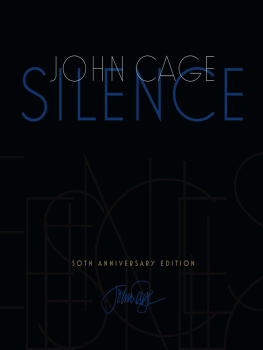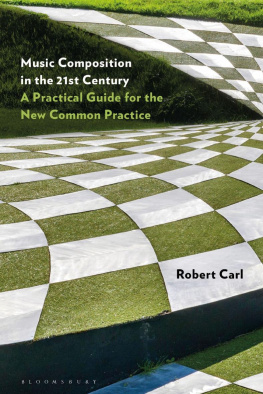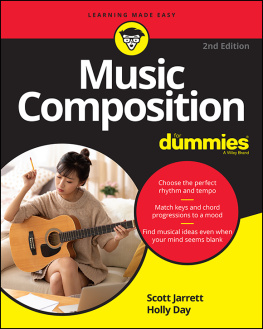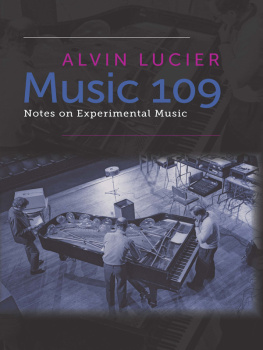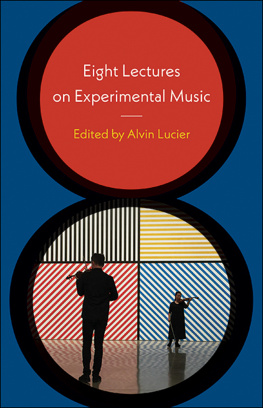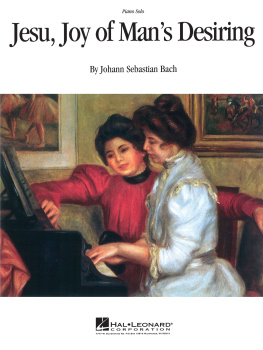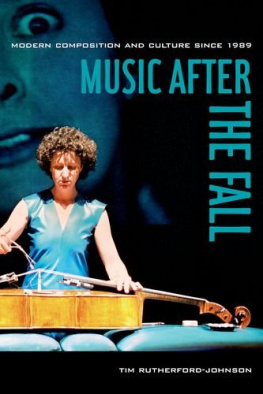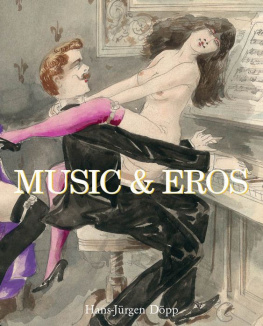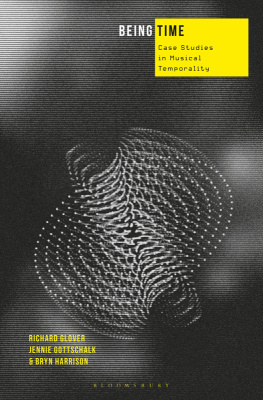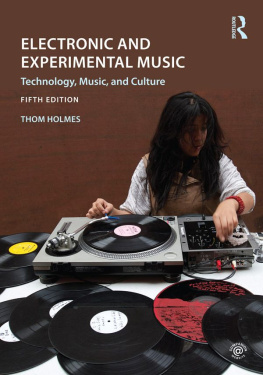
SILENCE
Lectures
and
writings
by
JOHN
CAGE
S I L E N C E
50TH ANNIVERSARY EDITION
With Foreword by Kyle Gann
Wesleyan University Press
Middletown, Connecticut
WESLEYAN UNIVERSITY PRESS
Middletown, CT 06459
www.wesleyan.edu/wespress
1939, 1944, 1949, 1952, 1955, 1957, 1958, 1959, 1961 by John Cage
Foreword to 50th Anniversary Edition 2011 Kyle Gann
All rights reserved
First printing, 1961
Wesleyan paperback, 1973
50th Anniversary Edition, 2011
50th Anniversary Edition paperback, 2013
Manufactured in the United States of America
5 4 3 2 1
Library of Congress Control Number: 2011936816
ISBN for the 50th Anniversary Edition paperback: 978-0-8195-7365-0
Many of these lectures and articles were delivered or published elsewhere from 1939 to 1958. The headnote preceding each one makes grateful acknowledgment of its precise source.
To Whom It May Concern
CONTENTS
FOREWORD TO 50TH ANNIVERSARY EDITION
Kyle Gann
Silence by John Cage is the book Ive reread most often in my life. Its that kind of book. I kept rereading it partly because what it seemed to mean kept changing. I first read it in 1971, so while this publication marks the fiftieth anniversary of the book, it is the fortieth anniversary of my engagement with it. I was fifteen, and it had a profound, enlivening impact on me. At seventeen I read it again and realized I hadnt really understood it the first time. At nineteen I revised my impression still more. And probably at twenty-one or twenty-two, and at twenty-five, and a few times in the 1980s and 90s, periodically finding its meaning in kaleidoscopic flux. Now, rereading it again, intently, cover to cover, at age fifty-five, I get a picture of it Ive never had before. But I am reluctant to conclude that my current reading is any more real or authentic than the earlier ones. The text remains the same; I change.
For instance, when I was fifteen I thought that Cages preparing six answers to give after the Lecture on Nothing no matter what questions people asked was a hilariously clever way to get his point across. At fifty-five, I think it must have just been off-putting. Am I right now, or was I right then?
Its not that Cage is an obscure writer: quite the contrary. Hes breezy, charming, precise, a little stylized at times. Hes even repetitive. The miserable shaggy nag story comes up again and again, and the anechoic chamber, and the important question of what do you think about Bach. You get the point. But what is the point? Or are there multiple points? Or, more in accordance with Cages popular reputation, is there perhaps no point at all? Cage can be didactic at times, and pontifical, and he does try now and then to convince you that experimental music is preferable to classical music, or that you should enjoy audience coughs and babies crying as much as a symphony, or that he, Morton Feldman, Christian Wolff, and Earle Brown were the only composers in the 1950s tuned in to the zeitgeist. As contemporary music goes on changing in the way I am changing it, he jovially thunders in 45 for a Speaker; such boldness is bracing for the young, threatening to the old. But along the way he challenges conventional wisdom, deflates pretensions, wipes away misassumptions, erases the slate for us all to start over. Do you see how much easier it is to get people to think for themselves by asking questions than by making pronouncements? Hmm?
And then there are all those wonderful stories that make up the performance piece Indeterminacy, which are probably the dominant items that many people take away from the book. Some of them have become famous in the music world: the aunt who loves her washing machine more than she does Uncle Walter, the trip to New Zealand that never materializes, the nonsequiturs from the autocratic Schoenberg, the fables about Zen monks, the mushroom trivia. The way Cage tells them, devoid of emotional nuance, makes the world itself seem absurd, and all its inhabitants slightly nuts, Cage alone excepted. They are endearing; some, you realize, would come off as pedestrian if anyone but Cage were telling them. People who enjoy Cages books but cant handle his music often call him a philosopher, but this bypasses the more obvious point: that, unlike your average philosopher, he was a brilliant writer, with a distinctively elegant style and a comic delight in paradoxes. And, in fact, writing was what he wanted to do before he turned to music.
And since people draw conclusions more intelligently from words than they do from music, it took this book to get Cages ideas noticed in the public world. Arriving as it did just at the onset of the 1960s, with a new generation eager for a new pace of living, it had a literary impact like an atom bomb. Silence has a reputation as the most influential book written by an American composerdo we need the word American?and it is difficult to argue otherwise. Other such books, and we might mention Henry Cowells New Musical Resources, Charles Ivess Essays before a Sonata, and Harry Partchs Genesis of a Music, have encouraged several generations of composers and musicians to think differently. But Silence was different. It encouraged everyone to think differently.
So before I run through the results of my latest rereading, lets ask: Who was John Cage before he published Silence? And who was he afterward?
We need only sketch the relevant details. There were two great turning points in Cages life: the change in his music in 1951, at age thirty-eight, and the change in his public careerbrought about by this bookat age forty-nine. He was born September 5, 1912, in Los Angeles. His father was an inventor; youll read the famous story of his submarine in the book, and many other stories of growing up in Los Angeles. A precocious but unassertive child, at age twelve Cage devoted himself to playing the piano works of Edvard Grieg, partly because that composer broke the prohibition against parallel fifths, which Cage interpreted as a liberation. Cage graduated high school as valedictorian and briefly attended Pomona College, more attracted to religion and then literature at the time than to music. Rebelling against the curriculum, he left college after a year to take a parentally financed tour of Europe in 1930 and 31. He studied Gothic architecture with Ern Goldfinger (190287), while also taking piano lessons at the Paris Conservatoire. When Goldfinger mentioned that in order to become an architect one must devote ones life to architecture, Cage took flight.
Cage returned to Los Angeles just in time for the Depression. His early attempts at music he regarded as overly mathematical, and threw them away. He studied composition with Henry Cowell (18971965), the guru of everything avant-garde in music in 1930s America. Cowell, in turn, recommended that Cage work with Arnold Schoenberg (18741951), who had come to America in 1933 to escape the Nazis, and who was already world famous for pioneering both atonal music and the twelve-tone technique, which he had invented in 1921. Twelve-tone method, to which Cage refers frequently in Silence, starts with an ordering of the twelve notes of the musical scale and derives every pitch structure in the piece from some transposition of that row, or else from its backward or inverted form, with the intent of imposing a kind of super-unity on the piecea unity that may not always be perceptible as such. After Schoenbergs death, the musicologist Peter Yates informed Cage that Schoenberg had referred to him as his one interesting American student, but also called him not a composer, but
Next page
